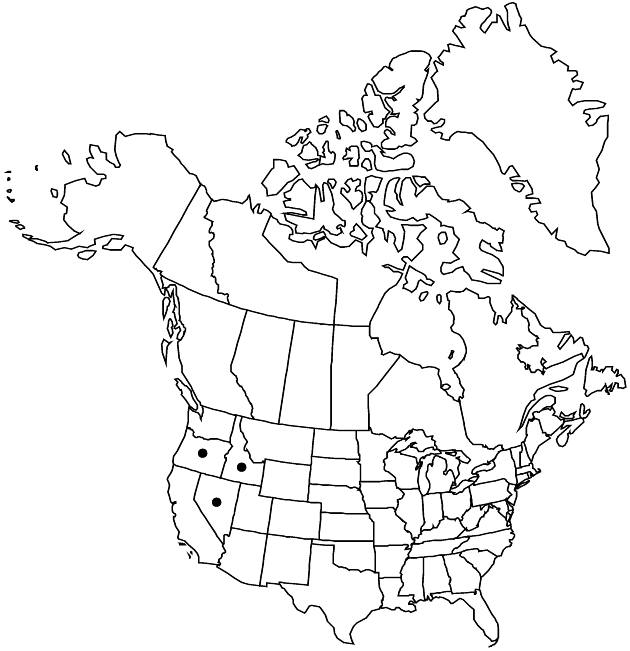Difference between revisions of "Artemisia papposa"
Leafl. W. Bot. 6: 43, plate 1. 1950.
imported>Volume Importer |
imported>Volume Importer |
||
| Line 51: | Line 51: | ||
|publication year=1950 | |publication year=1950 | ||
|special status=Endemic | |special status=Endemic | ||
| − | |source xml=https:// | + | |source xml=https://bitbucket.org/aafc-mbb/fna-data-curation/src/2e0870ddd59836b60bcf96646a41e87ea5a5943a/coarse_grained_fna_xml/V19-20-21/V19_921.xml |
|tribe=Asteraceae tribe Anthemideae | |tribe=Asteraceae tribe Anthemideae | ||
|genus=Artemisia | |genus=Artemisia | ||
Latest revision as of 19:57, 5 November 2020
Shrubs, 5–15(–20) cm (not cespitose), aromatic. Stems relatively numerous, erect, gray, simple (annual flowering branches leafy), loosely sericeous. Leaves (semideciduous) cauline (sessile), gray-green; blades oblanceolate, 0.5–3 × 0.2–1.5 cm (bases attenuate), 3-lobed or irregularly palmatifid (lobes narrow, apices acute), sparsely sericeous-lanate. Heads (mostly erect, peduncles 0 or to 25 mm) in racemiform arrays (4–)8–12(–14) × (0.5–)1–2(–4) cm. Involucres globose, 3.5–5 × 4–5 mm. Phyllaries ovate, sparsely sericeous. Florets: pistillate 8; bisexual 20–35; corollas yellow (tubular with broad throats), ca. 2 mm, glandular. Cypselae (light brown) oblanceoloid (4–5-angled, broadest at truncate apices), 0.3–0.5 mm, glandular-pubescent (pappi coroniform, 0.3–0.6 mm, irregularly lacerate).
Phenology: Flowering early spring–mid summer.
Habitat: Rocky swales, dry meadows, alkaline mud flats
Elevation: 1400–2100 m
Distribution

Idaho, Nev., Oreg.
Discussion
The pappose cypselae make Artemisia papposa anomalous within Artemisia. Artemisia papposa has capitulescence characteristics that suggest a relationship to Sphaeromeria.
Selected References
None.